In 1655 the Swedes occupied almost the entire Crown. Subsequent attempts to stop the Flood ended in failure, and the long-awaited victory in the open field did not come. Hope appeared only when King Jan Kazimierz returned to the country, and Stefan Czarniecki brought him dozens of new banners.
In the spring of 1656, the King of Sweden, Charles X Gustaf, was imprisoned by the Crown forces in the forks of the Vistula and San rivers. He was blocked by forces three times the size of his corps of less than six thousand people.
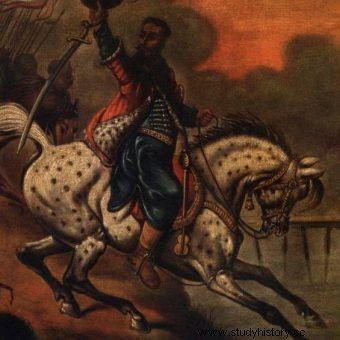
Czarniecki near Warka in the painting by Juliusz Kossak.
Earlier, the monarch had ordered his brother Adolf Jan to send reinforcements to Sandomierz under the command of Frederick, the Margrave of Baden. The corps marched from Warsaw on March 27. It was advancing slowly on the left bank of the Vistula, fighting small skirmishes with the surrounding peasant troops in the Radom Forest.
The powers of the margrave
The margrave's corps consisted of 60 companies of reiter, that is cavalry armed with firearms, and 18 companies of dragoons - horse-traveling infantry. Together, excluding the blind portions of these units, intended for the maintenance of the officer and non-commissioned officers, they were forces not exceeding two and a half thousand people, without artillery support. Worse still, most of them were recently contracted in Western Pomerania and had not yet taken part in major actions against Polish forces.
Already after the departure of the corps from the capital, Charles X Gustav realized that the troops heading towards him were exposed to enormous danger from the Polish troops. He himself could not meet them, and without the support of infantry and field artillery, they were a tasty morsel for the enemy. Therefore, when the margrave reached Janowiec on April 3, he received a categorical order to return to Warsaw, which was to be strengthened also by the crew from Radom.
Branches of Czarniecki and Lubomirski
Meanwhile, Polish commanders, Stefan Czarniecki and Jerzy Lubomirski, also learned about the upcoming relief for Karol. Soon both leaders moved towards Janowiec. On the Vistula, troops of the mass movement and peasants were left, who were commissioned to simulate the actions of regular forces, and on the San Lithuanians, Paweł Jan Sapieha. There were also carriages near Sandomierz with a certain number of domestics.
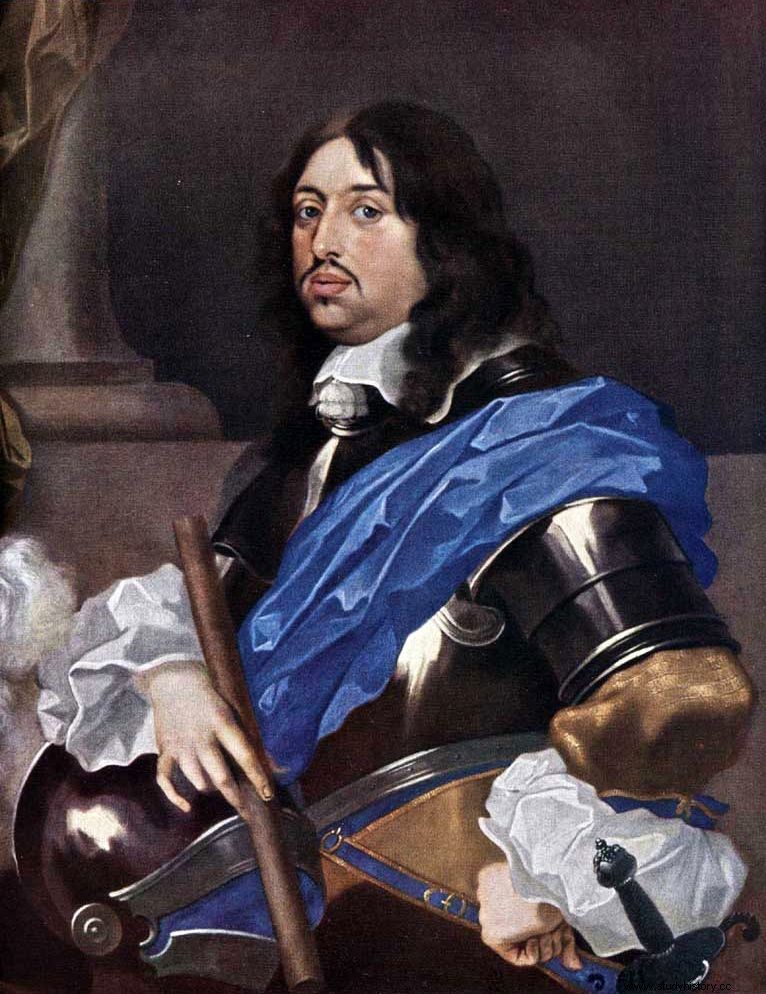
In the spring of 1656 Charles X Gustav found himself in a difficult position.
In total, the corps of Czarniecki and Lubomirski had a force of no more than 6,000 cavalry and dragoons. There were also several hussar banners in the composition of the forces of both regimuments. The largest, royal one, commanded by Czarniecki himself, had - as indicated by the state for the second quarter of 1656 - 199 horses.
Lubomirski's unit was slightly smaller, 190 horsepower, under the command of Andrzej Sokolnicki. In turn, the branch of Władysław Myszkowski, the voivode of Sandomierz, headed by Władysław Wilczkowski, had 165 horses, and Jan Zamoyski, the crown cupbearer - 137 horses. The remaining banners included mainly the armored, less armed Wallachian-Tatar and dragoons.
The chase
The Polish leaders set off towards the margrave's group in the early morning of April 4, in complete silence. Meanwhile, Fryderyk, after receiving the royal order, headed for the capital by the shortest route through Kozienice and Warka. At the same time, he sent the orderly to Captain Ritter to leave Radom and with the camps to go to the second of these places, where the two units were to be merged.
It is worth noting that if the margrave had followed the orders of his superiors less accurately, he could have avoided contact with the Poles pursuing him, and the battle would not have taken place at all. The distance between Sandomierz and Janowiec is almost 80 kilometers. Taking into account the poor condition of the roads in the spring and the beginning of thaw, this gave the Swedish commander a significant advantage. However, he was in no hurry. The Margrave knew that Ritter was burdened with luggage - some accounts even mention a thousand carts! - and marched slowly. He himself was carrying quite a lot of fleet with him.
As a result, while the Polish forces reached Zwoleń in the morning of April 6, the margrave was still stuck on the Pilica river. Czarniecki, who was in the avant-garde, decided to continue chasing the Swedes. Knowing from the local population that at the rear of the Swedish forces there was a weak unit of reiter and dragoons led by Captain Törnsköld, he decided to get him.
After a 30-kilometer chase, the enemy unit was attacked near Kozienice. The Poles smashed the enemy, albeit at the cost of their own great losses. After reaching Kozienice, the Polish commander decided to take a short break. He was waiting for the main forces led by Lubomirski.
Meanwhile, the news of the approaching pursuit, brought by the survivors from near Kozienice, reached the margrave. It was located about 20 kilometers away, near Ryczywół. On the same day he reached Warka, where he found Captain Ritter's huge caravan on the Pilica river.
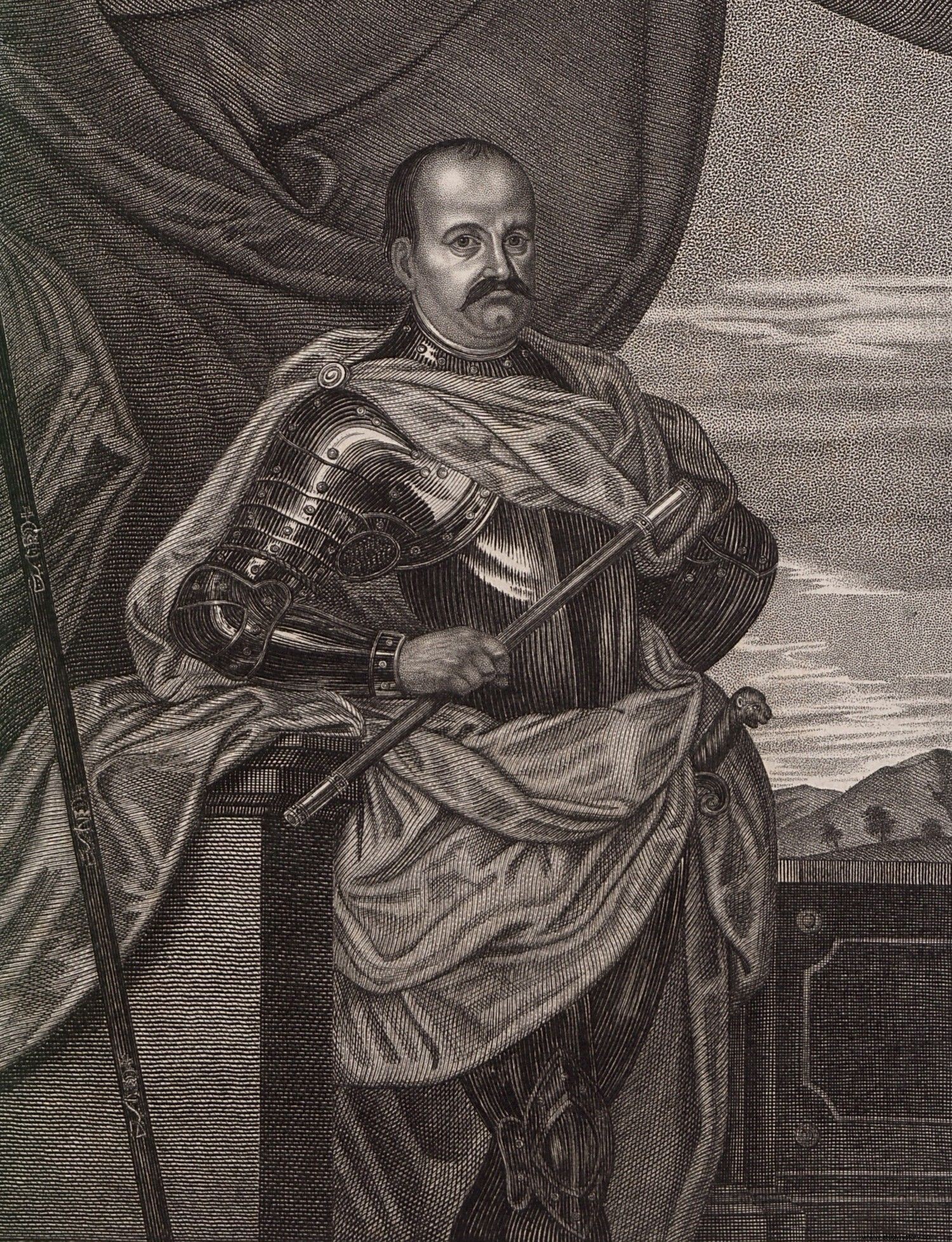
Jerzy Sebastian Lubomirski was at the head of the main Polish forces.
The next day, April 7, when the last luggage was cleared and the Swedish soldiers were finishing the demolition of the bridge, the first Czarniecki's banners appeared over the Pilica River. The front point of the castellan of Kiev covered a distance of about 170 kilometers in just three days! At the same time, the Swedes covered the distance from Janowiec to Warka, less than 100 kilometers.
Despite the closeness of the enemy, the margrave did not change the adopted plan. He set off with the main forces along the route towards Czersk, leaving the rear guard, and over the Pilica - small posts made up of several dozen reiters. In total, together with the Ritter team from Radom, he had about three thousand cavalry corps. He did not think that the Poles would get to the other side of the river so quickly. He couldn't have been more wrong.
Decisive two hours
A unit composed of the Sandomierz nobility found the ford and, after crossing the river, the Swedish guards broke up, allowing the main Polish forces to pass through. After crossing the Pilica river, both commanders agreed on further actions during a short conference. Czarniecki's task was to destroy both units guarding the crossing on the hills. He took them by surprise as he walked around Warka. The blow from the town side caused quite a stir among the Swedish dragoons - observing the crossing, they did not expect an attack from this direction at all.
The fights on the Pilica River lasted about an hour and only after the last Swedes were cut out, Czarniecki started to follow Lubomirski's forces. The latter, without waiting for the result of the clash, followed the margrave's troops. His three hussar units, commanded by Sokolnicki, Myszkowski and Zamoyski, caught up with the Ritter Dragoon regiment remaining in the rear guard. They smashed it on the first blow.
Only then did Fryderyk realize that he would not avoid the battle, and he began to prepare his already well-worn corps for it. After Ritter was smashed, he had no more than two thousand combatants. He formed the troops in a tight and deep formation, fearing a breakthrough by the Polish hussars. He leaned against the forest, so the Polish side could not outflank him, coming out to its rear. She had to hit head-on. In addition, he hid 600 dragoons among the trees, who were supposed to throw back the attacking Polish banners with musket fire.
Lubomirski struck, unable to wait for the arrival of Czarniecki's troops. The hussars set off for the first attack:three rots supported by dragoons. As Wespazjan Kochowski wrote, the Swedes received the attackers with dense musket fire. Although the Poles managed to break the ranks of the Swedish raiders, the fire of the rushing dragoons forced them to retreat to their starting positions.
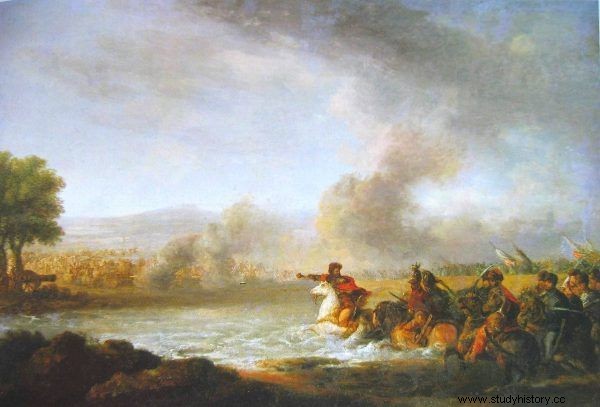
The Swedes were completely surprised by the pace at which the Polish cavalry crossed the Pilica.
Only reinforcements sent by Czarniecki saved the situation. When these units joined the Lubomirski group, both commanders had a force of four to four and a half thousand men. So they had at least a double advantage over their opponent.
The hussars strike again was supported by three newly arrived regiments. Rajtaria, tired of the fights so far, could not stand the blow and passed the rear. The rushing riders trampled the dragoons, preventing them from firing at the advancing Poles. Thus, the fate of the battle was decided. After a while it turned into a long-term chase after the fleeing Swedes.
Fortunately for the enemy, some of the Polish soldiers almost immediately focused their attention on the caravans, starting their looting. This life was saved for many fleeing people. Especially senior officers who could escape even faster thanks to better horses.
After the battle
What were the losses on both sides at Warka? Researchers' estimates, especially when assessing the balance sheet on the losing side, are very different. The well-known Swedish historian Carlbom lowered them to as many as 400 killed. Poles, in turn, for propaganda purposes, often overestimated Fryderyk's losses, even giving the number of four thousand killed.
However, none of these numbers seem correct. The losses of the Swedes should probably be estimated at roughly 1,500 killed and wounded. In addition, it is said that 260 prisoners of war, including 40 officers, as well as Transylvanian envoys Franciszek Sebesi and Mikołaj Jakub Falvi were in Polish hands. On the other hand, as far as the Polish army is concerned, most probably about 100 soldiers died. The same could have been injured.
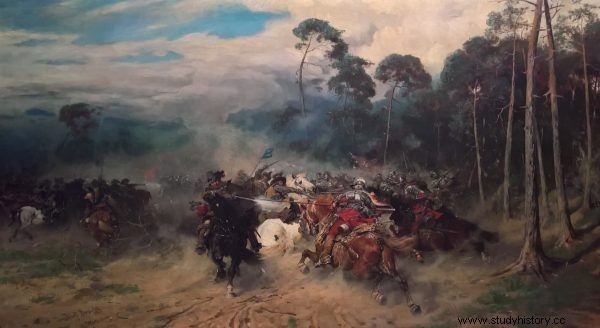
At Warka, the Poles achieved their first big victory over the Swedes during the Deluge. The illustration shows the painting by Józef Brandt "Skirmish with the Swedes".
In the battle of Warka, the Swedes suffered such serious losses for the first time in a clash with Poles in the open field. The Warka victory was certainly important for the Crown forces, which were rebuilding their morale, and was of great psychological importance for Polish soldiers. In the end, for the first time since the beginning of the Polish-Swedish war, they defeated the invincible army of Charles X Gustav.
Unfortunately, at the same time, the withdrawal of the Commonwealth's troops from Sandomierz meant that the main goal of the winter-spring campaign of 1656 was not achieved. It assumed the closure of Charles X Gustav's army in the fork of the Vistula and San rivers, starving it and forcing it to surrender.
***
You can read about the successes of our weapon in the book “Polish triumphs. 50 glorious battles in our history ” . Learn about the clashes that changed the course of history with this richly illustrated publication. From victorious fights in the times of Bolesław the Brave, to fierce battles in World War II. Successes that every Pole should remember.
- Englund P., Invincible , vol. I, Finna Publishing House, Gdańsk 2004.
- Kersten A., Stefan Czarniecki 1599-1665 , MON Publishing House, Warsaw 1963.
- Marcinkiewicz K., Stefan Czarniecki during the Deluge (Campania on the Vistula and San 1655-1656) , Krakow 1935.
- Nagielski M., Warka 1656 , Bellona, Warsaw 2015.
- Podhorodecki L., The Battle of Warka (April 7, 1656) , [in:] Studies and materials for the history of the art of war , vol. II, MON Publishing House, Warsaw 1956.
- Skworoda P., Warka-Gniezno 1656 , Bellona, Warsaw 2003.
- Wimmer J., Materials on the number and organization of the crown army in the years 1655-1660 , [in:] Military history studies and materials , vol. IV, MON Publishing House, Warsaw 1958.
